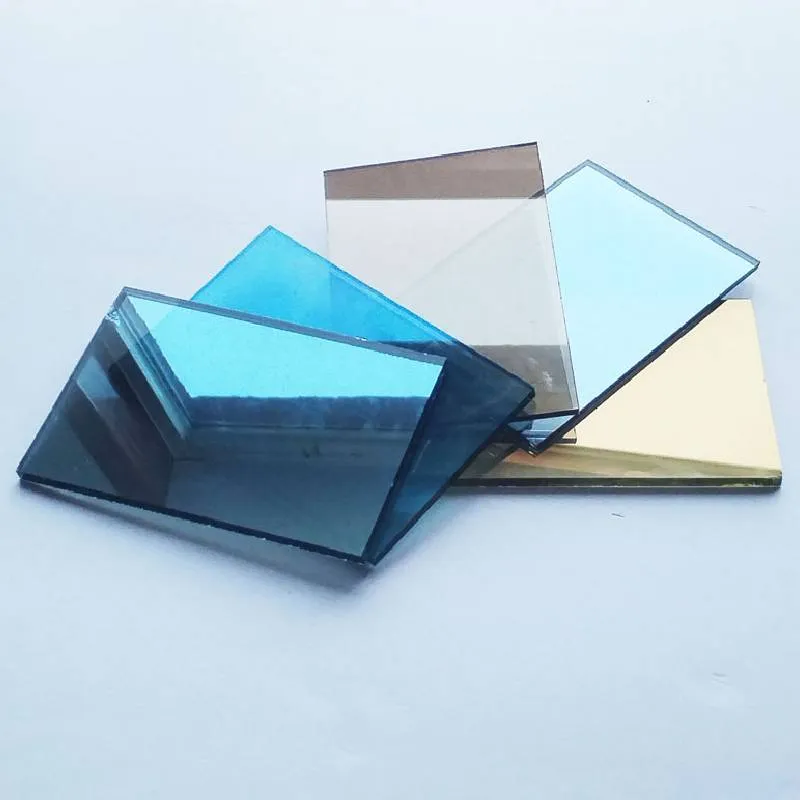The Benefits and Applications of Clear Glazing in Modern Architecture
Clear glazing has become an essential component in contemporary architectural design, providing numerous benefits that enhance both aesthetic appeal and functionality. As urban landscapes evolve, the demand for innovative materials that facilitate natural light and maintain energy efficiency has surged, positioning clear glazing as a key player in this transformation.
Understanding Clear Glazing
Clear glazing refers to transparent glass used in windows, facades, and other architectural elements. Its primary characteristic is its ability to permit light to pass through while offering a clear view of the outside environment. Typically, clear glazing can be made from various types of glass, including tempered, laminated, and low-emissivity glass. Each type serves unique purposes and provides different levels of performance regarding insulation, safety, and UV protection.
Aesthetic Appeal and Natural Light
The most immediate benefit of clear glazing is its ability to maximize natural light within interior spaces. In an era where biophilic design—integrating natural elements into architecture—is gaining popularity, the use of clear glazing allows architects to create bright, inviting, and energizing environments. Natural light not only enhances the aesthetic appeal of homes and buildings but has also been shown to improve mood and productivity among occupants. Clear glazing can transform a mundane office into a vibrant workspace or turn a residential living room into a sun-drenched haven.
Thermal Performance and Energy Efficiency
In addition to its aesthetic advantages, clear glazing can contribute to a building's energy efficiency when designed with modern glass technology. Low-emissivity (Low-E) coatings, for instance, can be applied to clear glass to minimize heat transfer while still allowing ample sunlight. This technology helps to maintain a comfortable indoor temperature, reducing reliance on heating and cooling systems. Consequently, buildings equipped with energy-efficient clear glazing can decrease their overall energy consumption, leading to lower utility bills and a reduced carbon footprint.
clear glazing
Versatility in Design
Clear glazing is exceptionally versatile, making it suitable for a variety of architectural styles and applications. Whether in minimalist designs that emphasize simplicity or in ornate structures that showcase intricate detailing, clear glazing can adapt to fit any vision. It can be utilized in residential buildings, commercial properties, museums, and public spaces. Moreover, clear glazing can be combined with other materials such as wood, metal, and brick, further enhancing creative possibilities in building design.
Safety and Security Features
While clear glazing emphasizes transparency and openness, it also offers essential safety and security features. Tempered glass, which is stronger than standard glass, is often used where safety is a concern, such as in high-traffic areas or around children. Laminated glass, which consists of two or more layers bonded together, provides additional protection against breakage, making it ideal for storefronts and commercial applications. These safety advancements promote a sense of security without sacrificing aesthetics.
Sustainable Solutions
As sustainability becomes a growing concern in architecture, clear glazing can play a vital role in eco-friendly designs. Many manufacturers now produce glass made from recycled materials or employ processes that minimize environmental impact. Additionally, employing clear glazing in passive solar design can harness sunlight for heating, further reducing the need for artificial energy sources.
Conclusion
In summary, clear glazing stands out as a pivotal element in modern architecture. Its ability to enhance aesthetic appeal, maximize natural light, improve energy efficiency, provide safety, and offer versatility makes it an invaluable resource. As architects and designers continue to explore sustainable and innovative solutions, clear glazing will undoubtedly remain a cornerstone in the evolution of contemporary building design. Whether in a bustling cityscape or a tranquil residential area, clear glazing not only connects inhabitants to the outside world but also contributes to a more sustainable and aesthetically pleasing built environment.
 Afrikaans
Afrikaans  Albanian
Albanian  Amharic
Amharic  Arabic
Arabic  Armenian
Armenian  Azerbaijani
Azerbaijani  Basque
Basque  Belarusian
Belarusian  Bengali
Bengali  Bosnian
Bosnian  Bulgarian
Bulgarian  Catalan
Catalan  Cebuano
Cebuano  Corsican
Corsican  Croatian
Croatian  Czech
Czech  Danish
Danish  Dutch
Dutch  English
English  Esperanto
Esperanto  Estonian
Estonian  Finnish
Finnish  French
French  Frisian
Frisian  Galician
Galician  Georgian
Georgian  German
German  Greek
Greek  Gujarati
Gujarati  Haitian Creole
Haitian Creole  hausa
hausa  hawaiian
hawaiian  Hebrew
Hebrew  Hindi
Hindi  Miao
Miao  Hungarian
Hungarian  Icelandic
Icelandic  igbo
igbo  Indonesian
Indonesian  irish
irish  Italian
Italian  Japanese
Japanese  Javanese
Javanese  Kannada
Kannada  kazakh
kazakh  Khmer
Khmer  Rwandese
Rwandese  Korean
Korean  Kurdish
Kurdish  Kyrgyz
Kyrgyz  Lao
Lao  Latin
Latin  Latvian
Latvian  Lithuanian
Lithuanian  Luxembourgish
Luxembourgish  Macedonian
Macedonian  Malgashi
Malgashi  Malay
Malay  Malayalam
Malayalam  Maltese
Maltese  Maori
Maori  Marathi
Marathi  Mongolian
Mongolian  Myanmar
Myanmar  Nepali
Nepali  Norwegian
Norwegian  Norwegian
Norwegian  Occitan
Occitan  Pashto
Pashto  Persian
Persian  Polish
Polish  Portuguese
Portuguese  Punjabi
Punjabi  Romanian
Romanian  Russian
Russian  Samoan
Samoan  Scottish Gaelic
Scottish Gaelic  Serbian
Serbian  Sesotho
Sesotho  Shona
Shona  Sindhi
Sindhi  Sinhala
Sinhala  Slovak
Slovak  Slovenian
Slovenian  Somali
Somali  Spanish
Spanish  Sundanese
Sundanese  Swahili
Swahili  Swedish
Swedish  Tagalog
Tagalog  Tajik
Tajik  Tamil
Tamil  Tatar
Tatar  Telugu
Telugu  Thai
Thai  Turkish
Turkish  Turkmen
Turkmen  Ukrainian
Ukrainian  Urdu
Urdu  Uighur
Uighur  Uzbek
Uzbek  Vietnamese
Vietnamese  Welsh
Welsh  Bantu
Bantu  Yiddish
Yiddish  Yoruba
Yoruba  Zulu
Zulu 

